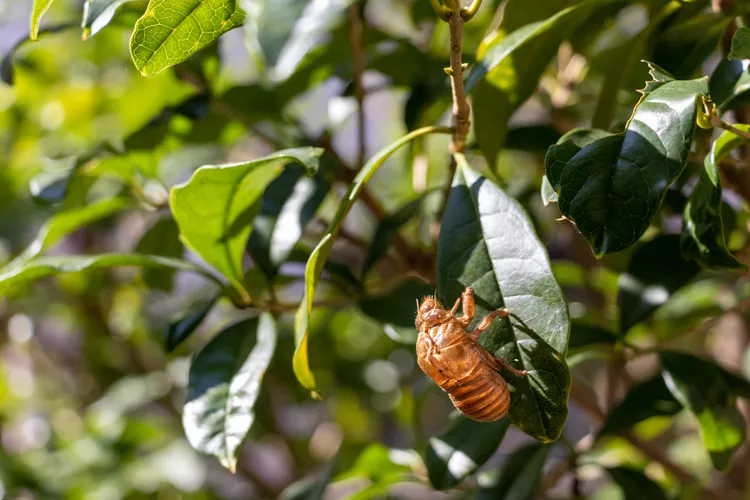Don't Throw Away the Cicada Carcasses in Your Yard—Use Them to Enrich Your Garden

The cicadas are officially here for the summer—but there’s no need to fear. In fact, it's a cause for celebration when it comes to your garden.
Every few years, cicadas pop up in waves across the U.S. This year, the 13-year Brood XIX and the 17-year Brood XIII are ~coming out of their shells~ and making an appearance across the country. This means you'll inevitably find cicada carcasses and shells scattered on the ground, especially throughout the Midwest (specifically Illinois). If your yard is impacted, you might be wondering what to do about the cleanup. Of course, you could collect them and throw them away, but you can also use them to transform your garden— and get some extra points for sustainability.
The easiest way to reap the benefits of cicada carcasses in your garden is by simply tossing them into your compost pile. Dead cicadas are full of nitrogen, which fuel the microorganisms that break down organic matter, speeding up your compost process. Nitrogen also helps with various cell functions in the plant and facilitates its growth. Plus, the exoskeleton of a cicada is chitin-rich, which is good for microorganisms in the ground and naturally enriches your soil.
“By incorporating molted cicada shells or dead cicadas into your potted plant soil or garden beds, you help improve its texture and fertility,” Samantha Tibbetts, the E-Commerce Manager at Lawnifi, a garden and lawn care company, said in a press release. “And hey, you’re cleaning up a bunch of dead bugs while you’re at it. Win-win!”
Because these shells add an abundance of nitrogen, be careful that your compost is balanced out with the right amount of carbon. Add in organic matter that's carbon-heavy: Look for predominately brown materials, like dried plants, fallen leaves, shredded tree branches, cardboard, wood shavings, along with newspaper, hay, and straw.
If you aren’t keen on adding cicada shells and dead cicadas into your compost, you can also drop them directly into your garden to use as fertilizer. If you want to take it to the next level, you can crush the cicada shells and bodies into smaller pieces and spread those around, which helps to speed up the decomposition process. You can also use a rake to till the crushed cicada into your soil.
If those steps sound too intimidating or if looking at a cicada carcass makes you squeamish (understandably), you can simply leave the bugs where they fall. Eventually, they’ll decompose naturally and give the ground some much-needed nutrients. But cicadas can emit an unpleasant odor, so you might want to bury those cicada bodies and shells as soon as possible.
While this composting option might seem kind of gross, remember that bugs are all over your garden anyway—you might as well put them to work in the name of better soil and sustainability.